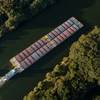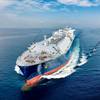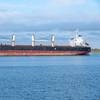Tiny alien invaders transported in ballast water star as the villains in a new documentary film on harmful organisms in ships’ ballast water launched on March 23 by IMO, the United Nations agency responsible for the safety and security of shipping and the prevention of marine pollution by ships, and BBC Worldwide. The documentary film, “Invaders from the Sea”, which will be broadcasted/distributed on television worldwide, shows that harmful organisms transported in ballast water by ships have caused biological and economic havoc around the world, largely due to the expanded sea trade and traffic volume over the last few decades. The film also highlights the progress made by IMO and the maritime industry in addressing this issue and the measures which can be taken to prevent the spread of harmful organisms. The film captures the dramatic impact of this issue on the lives of millions of people, using examples of three harmful organisms, which have been transported to new areas in ships’ ballast water. It features the North American comb jelly, which has been transported to the Caspian Sea. This tiny ctenophore is a voracious predator and reproduces rapidly under favorable conditions. It feeds excessively on zooplankton, depleting stocks and altering the food web and ecosystem function. It contributed significantly to the collapse of fisheries in the Black and Azov Seas in the 1990s, with massive economic and social impact, and has now depleted stocks of the local kilka fish in the Caspian Sea. The impact on one Caspian fisherman and his family is highlighted in the documentary. Another organism featured in the film is the Golden mussel (Limnoperma fortunei), a native to south eastern Asian rivers and creeks which has been transported in larval form in ships’ ballast water to South America. It traveled to Brazil up river from the coastline of Argentina and is a highly reproductive invasive species that clogs up water intake pipes for hydro-electric power stations and fouls up other structures. It affects the feeding patterns of local fish, causing fish stocks to fall. The film shows the devastating impact of the golden mussel on fishing and hydro-electric power stations and on the local ecosystem. Last is the Toxic Algae (Red Tides), which are various species, including toxic dinoflagellates, that cause red tides to appear. Several species have been transferred to new areas in ships’ ballast water. They may form harmful algae blooms and, depending on the species, can cause massive kills of marine life through oxygen depletion, release of toxins and/or mucus. They can foul beaches and impact on tourism and recreation, while some species may contaminate filter-feeding shellfish and cause fisheries to be closed. Consumption of contaminated shellfish by humans may cause severe illness and death. The film focuses on South Africa where there has been an increase in cases of paralytic shellfish poisoning, after people ate shellfish collected from beaches affected by red tides. Paralytic shellfish poisoning can cause tingling and numbness of the mouth, lips and fingers, difficulty in breathing, accompanied by general muscular weakness and lack of co-ordination, and can lead to paralysis and death if not treated.
Ballast is crucial for the stability of a ship and it is estimated that about 3 to 10 billion tons of ballast water are transferred globally each year, potentially transferring from one location to another species of sealife that may prove harmful when released into a non-native environment. In 2004, IMO adopted the International Convention for the Control and Management of Ships' Ballast Water and Sediments, a new international treaty to prevent the potentially devastating effects of the spread of harmful aquatic organisms carried by ships' ballast water. The Convention will require all ships to implement a Ballast Water and Sediments Management Plan. All ships will have to carry a Ballast Water Record Book and will be required to carry out ballast water management procedures to a given standard. Existing ships will be required to do the same, but after a phase-in period. The documentary is intended to raise public awareness of the issue and is an invitation to Governments to effectively implement the Ballast Water Management Convention. Meanwhile, IMO is executing the Global Ballast Water Management Project (GloBallast) in partnership with the Global Environment Facility (GEF), and the United Nations Development Program (UNDP), to assist developing countries to reduce the transfer of harmful aquatic organisms and pathogens in ships' ballast water, and to build capacity for legal, policy and institutional reforms in line with the new international regulatory regime. The second phase of this Project - Globallast Partnerships - is expected to start in early 2007 and will incorporate a number of strategic partnerships, including the private sector, to achieve its aims. The documentary features some of the solutions to preventing the spread of invasive species in ships’ ballast water, including exchange of ballast water on the high seas and new technologies that are under development, such as flow-through systems to continuously exchange ballast water while the ship is sailing and methods to kill/inactivate microscopic life forms such as by using ozone or ultraviolet light. Different solutions may be required for different ships. Filming took place during 2005 and 2006, around the world, with co-ordination carried out by a Steering Committee established by IMO at its Headquarters in London. The production enjoyed considerable sponsorship from Vela International Marine, BP Shipping and Wallenius-Alfa Laval Consortium, as well as from the Swedish International Development Co-operation Agency and support from the GloBallast pilot countries (China, Iran, India, Ukraine, South Africa and Brazil).
Subscribe for
Maritime Reporter E-News
Maritime Reporter E-News is the maritime industry's largest circulation and most authoritative ENews Service, delivered to your Email five times per week










